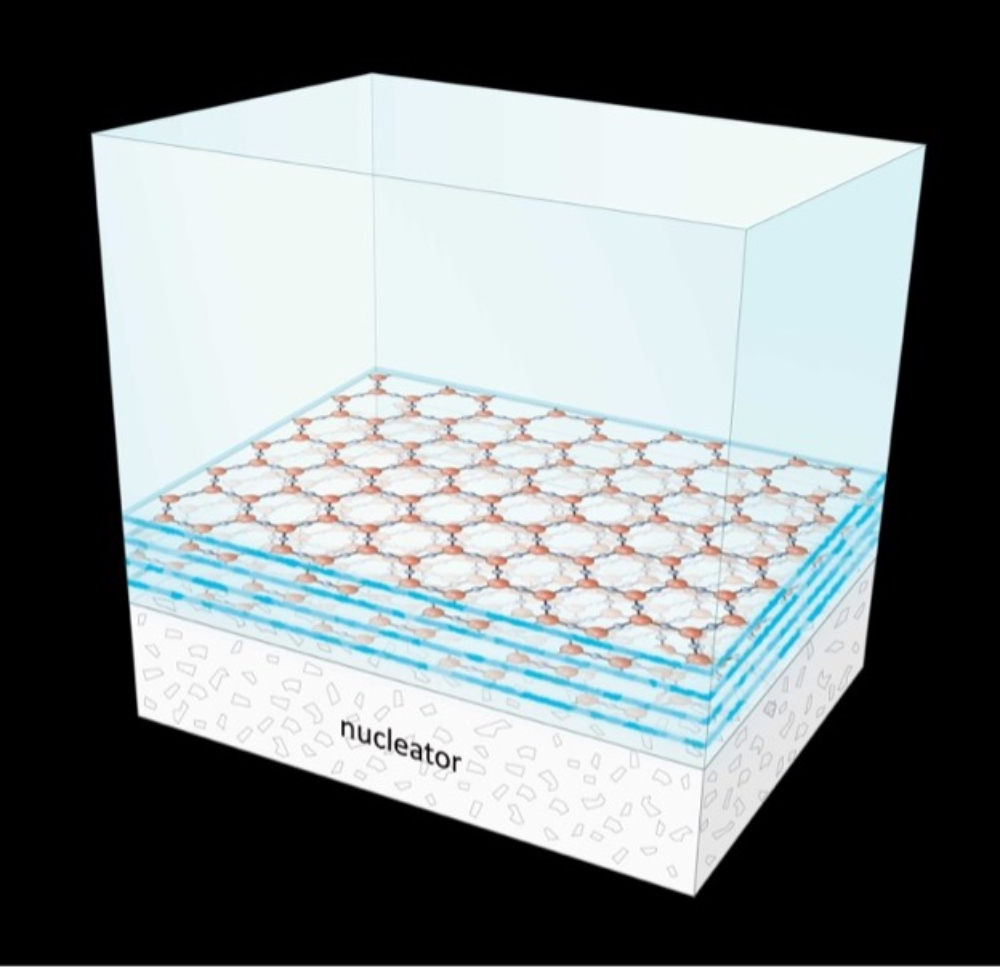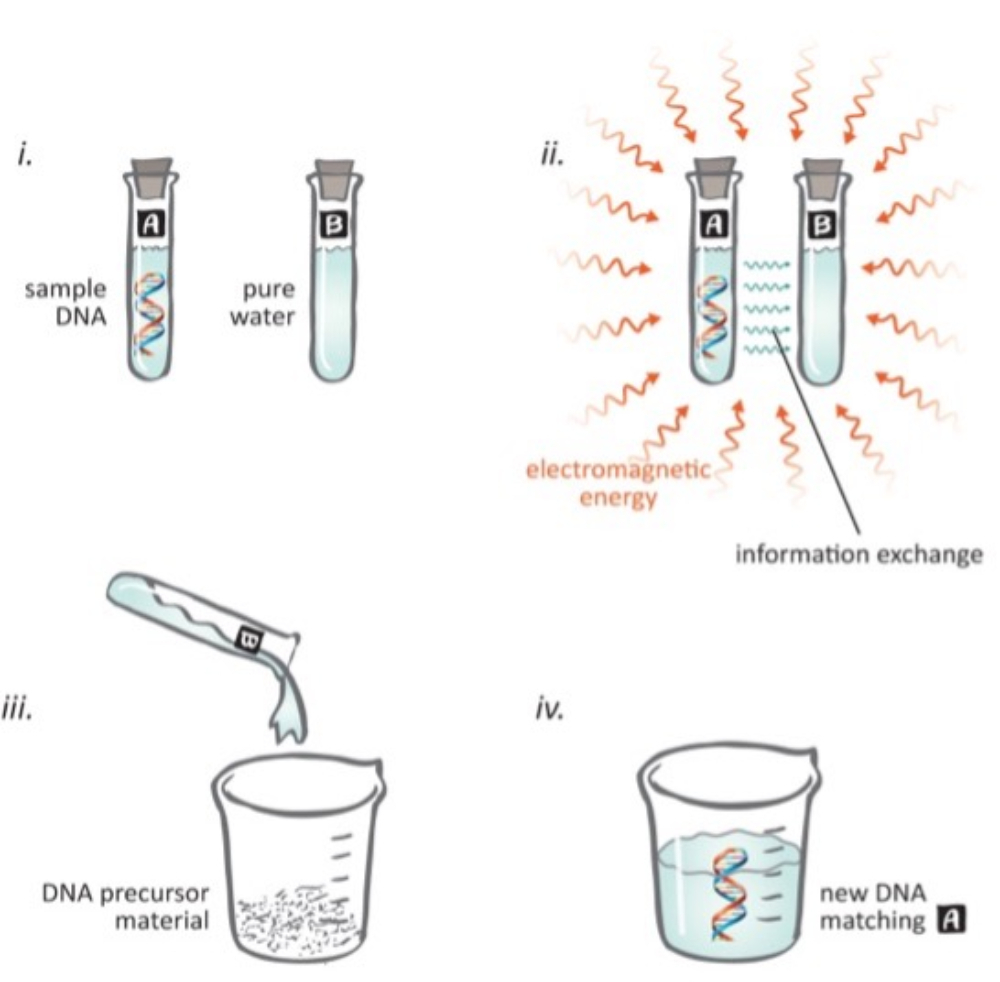The idea of information storage in water would seem preposterous. Just think of water’s structure: the liquid consists of molecules randomly oriented, bouncing around a furious number of times per second. A substance with any such character would have scant possibility of harboring any kind of memory.
That’s perhaps the principal reason why the eminent French scientist, Jacques Benveniste, was effectively crucified in 1989 for claiming that water had memory. Despite clear, objective evidence, water memory seemed inconceivable. Benveniste was attacked principally by John Maddox, the editor of the journal Nature. Benveniste’s esteemed reputation quickly plummeted, and he became a scientific joke: “Having trouble remembering? Just drink some of Benveniste’s water, and all memory will be restored.”
What’s required for storing information?
A way of understanding is to see what’s needed for memory in a computer, e.g., for your thumb drive. Inside is a large collection of transistors, each sitting at a fixed point in a regular two-dimensional grid-like array. Each one of those transistors can occupy one of two states, generally assigned “zero” or “one.” That two-dimensional array of entities, each bearing one of two states, constitutes the basis for memory.
Liquid water contains no such features; it’s, therefore, unlikely to serve as a substrate for memory. The question arises, however, whether the needed features might be contained in fourth-phase (“EZ”) water. As presented (The Fourth Phase of Water, Ebner and Sons, 2013), the features would seem to suffice. EZ water appears in stacks of honeycomb sheets, each sheet containing regularly arrayed atoms of oxygen and hydrogen, figure 1. Those sheets stack in register. Hence, the overall array conforms to the regularity criterion, extending even into the third dimension.
 Figure 1. Nucleating surface adjacent to liquid water builds EZ layers in a sheet-like stack.
Figure 1. Nucleating surface adjacent to liquid water builds EZ layers in a sheet-like stack.
As for the multiple-state requirement, hydrogen does not seem to satisfy. But oxygen does. Well-known even in chemistry texts is the fact that the oxygen molecule has five oxidation states, ranging from -2, through -1, 0, +1, and +2. So, unlike transistors, which can occupy only two states, oxygen molecules can occupy five states, conferring an edge over transistors.
Hence, the criteria required for memory are not only satisfied but satisfied in abundance. At least in theory, the fourth-phase array ought to have a vast capacity for information storage. The question is whether indeed that EZ water really does store information.
Detecting the presence of EZ water is straightforward — simply measure the absorption of UV light at ~270 nm wavelength. Waters absorbing a lot of UV light at that wavelength contain ample EZ, while waters absorbing little contain essentially no EZ. Spring waters appear to contain varying amounts, as do many other waters. Exposure to electromagnetic signals of certain frequencies also builds EZ water. Hence, EZ waters are commonly present, in varying amounts.
Given such a substrate for the lodging of memory, we cut to the chase: does evidence exist for the presence of water memory?
The answer is yes. Ample evidence exists, and a good place to get the flavor is to look at videos of presentations at the Annual Conference on the Physics, Chemistry, and Biology of Water, where videos of past conferences reveal diverse pieces of evidence from various laboratories.
Prior to the onset of those conferences, there were the famed experiments to which I earlier alluded, carried out in the laboratory of Jacques Benveniste. Benveniste had been exploring basophil cells. When exposed to specific antibodies, basophil cells release histamine. Benveniste noted something odd: When antibodies were diluted and diluted, even beyond the point at which, statistically speaking, no antibodies remained, only water that had been exposed to those antibodies, still, the response was the same. Cells released histamine. Benveniste argued that the water that had been exposed to the antibodies must have retained the memory of antibody structure. Otherwise, how could the water have elicited so specific a response?
Benveniste submitted his manuscript to the premier research journal, Nature. Rejection. Even when he resubmitted it, together with confirmatory results from several other research groups, still the editor opined that it could not be right. If it were right, he asserted, “everything else would be wrong, and I refuse to believe that everything else is wrong.” Nevertheless, the editor agreed to publish conditionally. The condition was that a committee of peers would soon visit the lab, look over their shoulders, and report back to their readers. Confident he was right, Benveniste agreed.
The visit was a setup. The committee of peers consisted of the editor himself, someone from the National Institutes of Health’s Center for Scientific Integrity, and perhaps the most controversial of all: The Amazing Randi. James Randi was a famous magician, renowned for figuring out the tricks of other magicians. After a few days in the laboratory, the visiting “peers” concluded, indeed, that it must have been some kind of trick, or delusion as magicians would put it, but they could not figure out the nature of the trick. Asserting in a subsequent issue of Nature that water memory was, therefore, a “delusion,” even though independently confirmed by various laboratories, was a blow to Benveniste’s credibility, and the beginning of his downfall.
But Jacques Benveniste had friends. One of those friends was Luc Montagner, who won a Nobel Prize for identifying HIV. After Benveniste’s (premature) death, Montagnier continued along the same theme by beginning his own studies of water memory. His main result is described in figure 2. Montagnier put short strands of DNA into an aqueous solution, in a container that was well-sealed. Nearby, he placed an equally well-sealed flask of water. No chemicals could be exchanged. To energize the system, he exposed it to 50 Hz for one day. Montagnier asserted that information from the DNA, or from the water surrounding the DNA, was being transmitted to the nearby flask of water through some unknown source of energy.
 Figure 2. Outline of Montagnier experiment, depicting the steps in the experiment demonstrating the replication of DNA in the absence of any chemical contact.
Figure 2. Outline of Montagnier experiment, depicting the steps in the experiment demonstrating the replication of DNA in the absence of any chemical contact.
The results were astonishingly positive. The “informed” water was studied using the PCR reagents (the same methodology used for Covid tests). The newly amplified DNA in that water had the same sequence as the original DNA. Many scientists were skeptical. By now, however, three independent groups have confirmed the result in peer-reviewed publications. Whether such confirmation has diminished the speculation remains unclear, but Montagnier’s result stands as additional scientific evidence for the memory of water. Not just Benveniste, but also Montagnier.
Many additional experimental results support the contention that water has the capacity to store information. At the aforementioned Annual Conference on the Physics, Chemistry, and Biology of Water, the concept of water memory is widely taken as an experimental fact. For the reasons given above, the substrate for storing the information is likely to be fourth-phase water.
You might also be aware of the work of the spiritualist, Masaru Emoto. Emoto showed that projecting his consciousness onto water, which was subsequently frozen, could impact an ice-crystal shape. Positive emotions such as “peace” and “love” resulted in beautiful crystals, whereas negative emotions resulted in ugly ones. Many scientists reject these findings because samples were cherry-picked. New experiments by the original Emoto group, and by Veda Austin, from New Zealand are now dealing with the issues of consistency and repeatability. We await their outcome.
You might ask: so what? What if, indeed EZ water has the capacity to store information? Why should this be of interest to anyone?
The short answer lies in the fact that our cells are filled with EZ water, which participates in all cellular activity. Thus, the proper input of information could, at least in theory, have the capacity to alter the dynamics of cell function.
At present, this prospect lies in the future. On the other hand, it is gaining momentum. Some scientists predict that it may well become a frontier topic.















